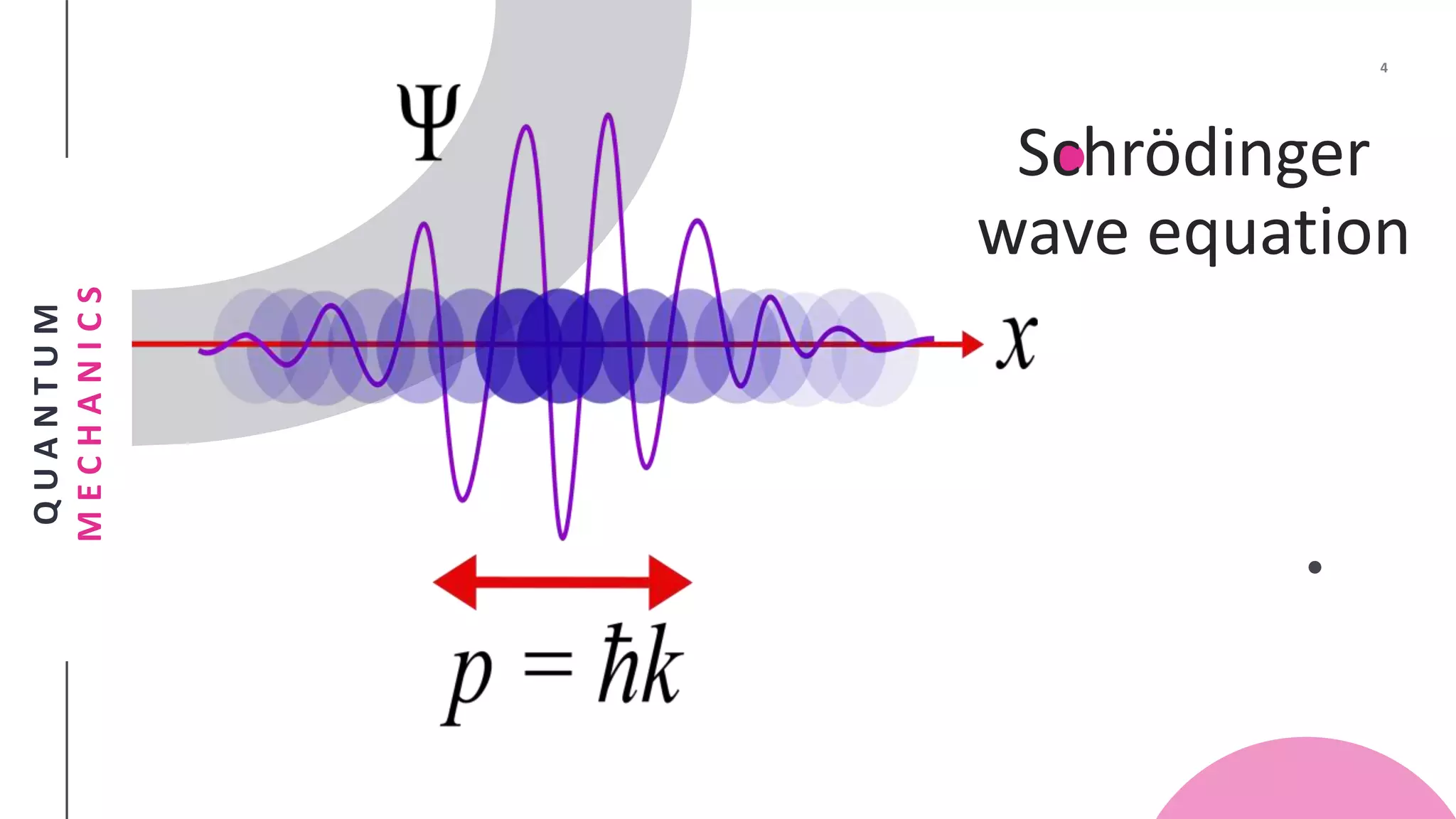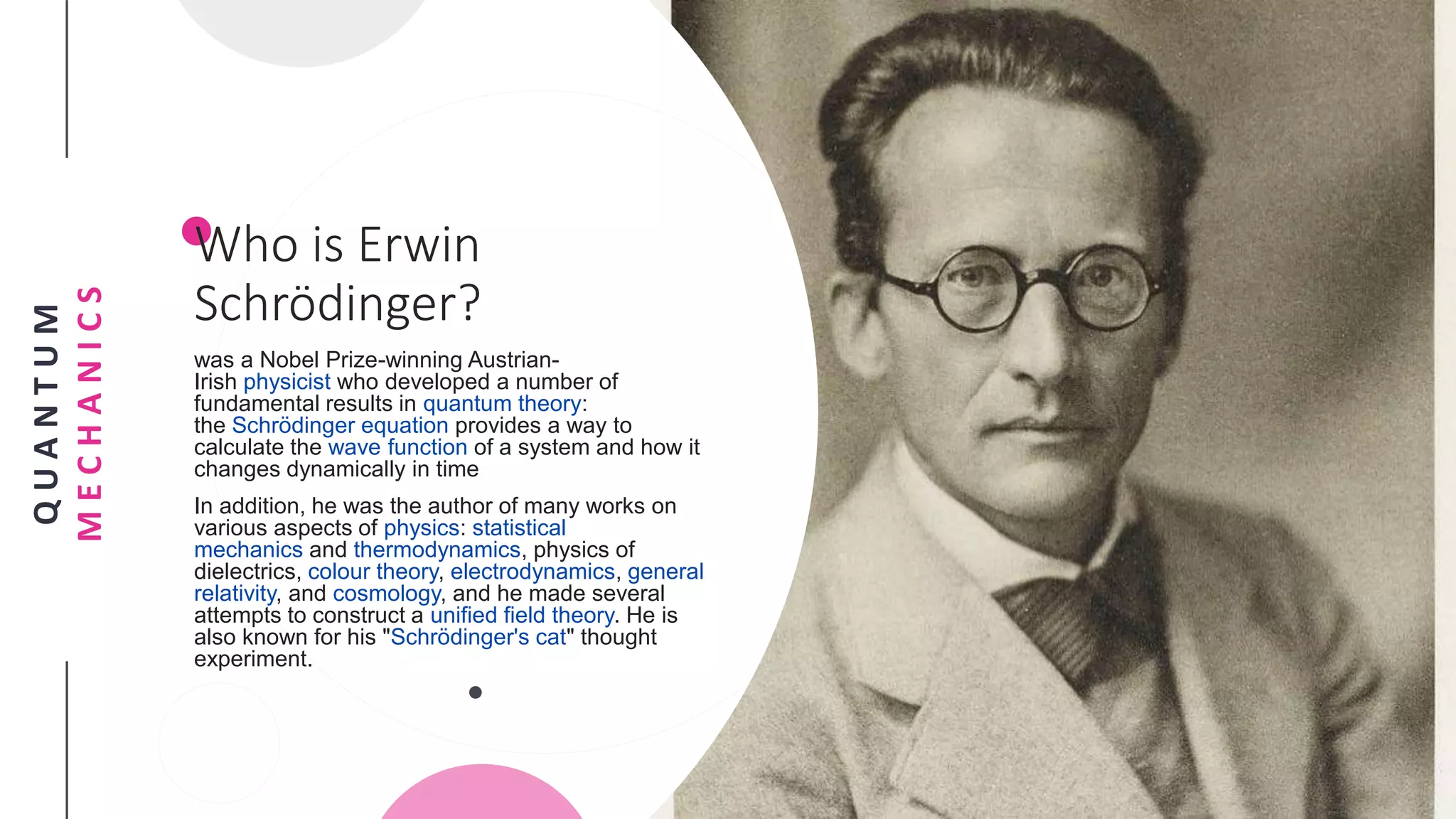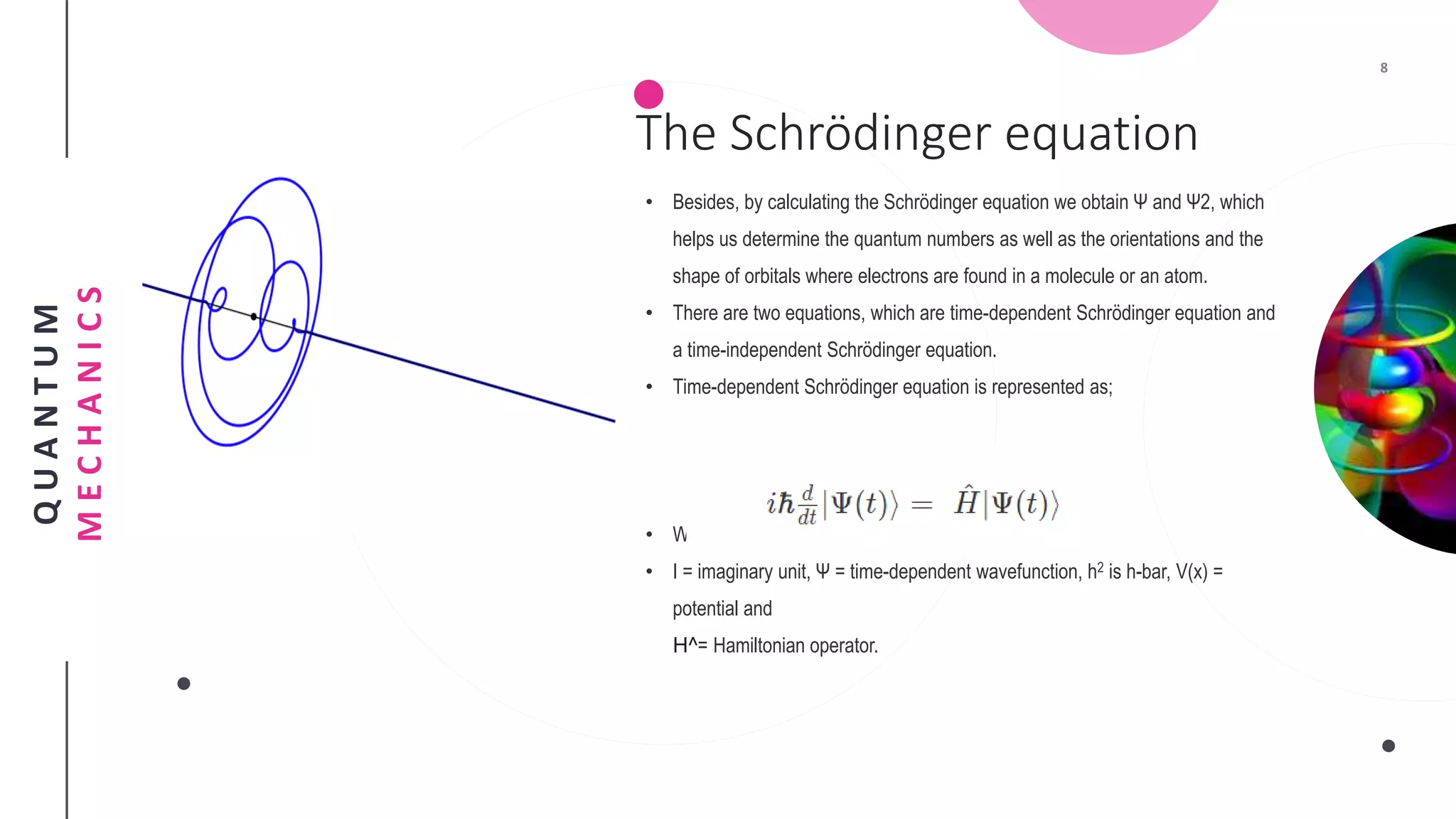The document provides an overview of quantum mechanics concepts including:
- Erwin Schrodinger developed the Schrodinger wave equation which describes the energy and position of electrons.
- The time-dependent and time-independent Schrodinger equations are presented for 1D systems. Solutions include plane waves and wave packets.
- The postulates of quantum mechanics are outlined including the use of wavefunctions and Hermitian operators to represent physical quantities.
- Differences between the interpretations of quantum mechanics by Heisenberg and Schrodinger are briefly discussed.




















![Q
U
A
N
T
U
M
M
E
C
H
A
N
I
C
S
• [1] Griffiths, D., Introduction to Quantum Mechanics, 2nd ed.,
Prentice-Hall, New Jersey, 2004.
• [2] Greiner, W., Quantum Mechanics an Introduction, Springer, New
York, 1994.
• [3] Principle of Physical chemistry by B.K. Puri
Bibliography](https://image.slidesharecdn.com/schrdingerwaveequation-210703115755/75/Schrodinger-wave-equation-21-2048.jpg)